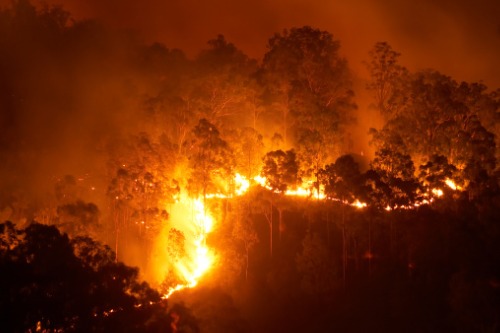

Wildfire risk has grown in severity in recent years. Evidence for that statement is close at hand. Australia is still reeling from one of its most catastrophic wildfire seasons on record, which to this date has claimed at least 33 lives, destroyed more than 3,000 homes, and razed more than 26.2 million acres. North America has fared no better. In 2018, roughly 8,77 million acres burned from wildfire in the US, and in Canada, the 2016 Fort McMurray wildfire remains one of the most devastating and costly disasters in recent history.
So, what key components are driving wildfire severity around the world? Insurance Business caught up with Michael Young, vice president, model product management, at Risk Management Solutions (RMS), who shared some insights into factors contributing to wildfire vulnerability.
Wildland-urban interface
“We continue to build more buildings,” said Young. “Some characterize this as building buildings in the wrong spot – but that’s not necessarily a fair characterization.” The equation is simple. As the global population grows, countries around the world are developing more homes, and building critical economic and civil infrastructure. Young added: “As you build more buildings, you just get more losses in total. But over the last 20 years, there’s been about a 30% increase of buildings that are potentially in harm’s way of what is called a wildland-urban interface.”
The wildland-urban interface is an area designated as highly prone to wildfires. It’s where homes and buildings are built in close proximity or intermingling with flammable wildland vegetation. Developments in the wildland-urban interface are problematic for several reasons. First and foremost, the majority of wildfires are actually human caused. The more humans living in the wildland-urban interface, the greater the risk of ignition. Furthermore, as houses and other structures are built in the wildland-urban interface, native vegetation is lost, and the natural balance is disturbed. This also impacts the severity of wildfires.
Climate change
“The second major cause of escalating wildfire severity is climate change so far,” Young told Insurance Business. “Climate change is basically about increased variability. As the polar ice cap melts and that changes the flow of the jet stream, you tend to get different types of weather patterns than you have traditionally seen in different areas. You might get more extremes in terms of rainfall and absence of rainfall. So, you tend to see larger floods and larger wildfires as a result of that.”
Scientific study has proven that human-induced climate change promotes the conditions on which wildfires depend, therefore increasing their likelihood. As global temperatures rise, this could stimulate hot and dry conditions that promote wildfire risk.
Historic suppression
How we respond to wildfire can impact the nature of the risk in the future. Young gave the example of the United States in the 1930s and 40s, when the US Forestry Service had a policy of total fire suppression, known as the “10am policy”. Under this directive, all wildfires were to be brought under control by 10am the morning after ignition, regardless of their location and proximity to human life and/or assets.
“What we’ve found over time, and research scientists have been looking at this for a while, is that wildfire is actually a very natural part of the ecosystem,” Young noted. “They occur on average every 25 to 30 years. If you look at burns scar records from cross sections of trees that are in the National Forest, you see that this is the average frequency.
“What happens when you suppress wildfires is that you tend to change the characteristics of the forest so that they have more burnable undergrowth. That means wildfires tend to spread faster and more frequently than they would in the absence of that kind of suppression. This is something that the fire fighter community is now realizing - that perhaps there are different patterns that we should be allowing in order to let the health of the forest continue to remain, and not cause the largest of the large fires.”
